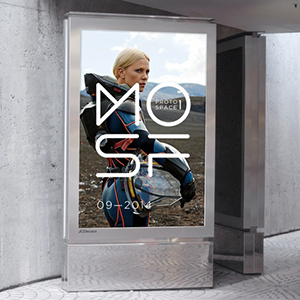“Imagination is everything. It is the preview of life’s coming
attractions.” – Albert Einstein
For Greg Viggiano, Executive Director of the Museum of Science Fiction
(MOSF), these words are the cornerstone for his work in empowering today’s
youth to be the pioneers of tomorrow.
The importance of STEAM education (Science, Technology, Engineering, Arts
and Mathematics) has grown exponentially in the past decade with our need
for more advanced solutions to the world’s growing problems. It is
Viggiano’s belief that MOSF will spark the imagination of next-generation
thinkers to help make science-fiction a science-fact. The museum, still in
its early stages, is working dutifully towards securing a physical home for
their enriching programs.
The mission of the Museum of Science Fiction is to create a center of
gravity where art and science are powered by imagination. Science
fiction is the story of humanity: who we were, who we are and who we
dream to be. The Museum will present this story through displays,
interactivity and programs in ways that excite, educate, entertain and
create a new generation of dreamers.
Imagine a museum where you and your kids can take control of a star fighter
navigating a deadly asteroid field or walk among the alien flora and fauna
of a far-distant planet, entirely different from our own. How about a
catalog of science fiction’s greatest technologies, where you can envision
and develop your own energy-based tools and time-traveling devices? These
are the kinds of exhibits that MOSF hopes to bring to life when the museum
finds a permanent home.
MOSF began in 2013 with a team of 38 volunteers working to make the museum
a reality. Today, there are over 120 team members made up of industry
professionals with backgrounds ranging from NASA to Hollywood. Though there
have been science fiction exhibits prominently featured in various museums
in the past, no other organization has sought to dedicate an entirely
curated facility to the world (or worlds rather) of speculative
fiction.
The Museum of Science Fiction will be the world’s first comprehensive
science fiction museum, covering the history of the genre across the
arts and providing a narrative on its relationship to the real world.
It is the goal of the museum to eventually house seven indefinite
galleries. Viggiano says, “It is designed to celebrate and encourage the
very human tendency to always ask: ‘What if?'” These galleries will begin
with The Creators of science fiction themselves, the storytellers and
artists who first posed that indelible “What if?” to the world. From there,
visitors will travel to the unfamiliar (and often too familiar)
Other Worlds, perhaps aboard an advanced spaceship in the Vehicles gallery
or via an inter-dimensional device in the Time Travels wing. You’ll be
amazed by the strange life forms encountered in Aliens, Creatures and
Altered Life and wishing you had a pet automaton after leaving Computers
and Robots. Lastly, you’ll explore the blurring relationship between
fantasy and science fiction when it comes to the sufficiently advanced
creations in the Technology gallery.
Educational development is paramount to MOSF and it is the museum’s belief
that by stimulating children’s imaginations, they will be encouraged to
explore the fields of science, technology, engineering, the arts and
mathematics.
The Museum’s educational mission is to share and use science fiction as
a way to inspire imagination and motivate learning in science,
technology, engineering, the arts and math.
This is the main objective of MOSF’s pilot program with DC Public Schools,
where industry professionals, such as NASA Goddard’s Dr. C. Alex Young,
teach project-based learning opportunities that engage students in critical
thinking and challenge their views of science fiction using STEAM
programming. Over the next five years, the museum aims to develop
additional project-based learning activities in and out of schools, an
online resource center for educators and students, scholarships and grants,
competitions and contests in the STEAM fields and educational exhibitions
with high levels of interaction.
Since 2016, the museum has been providing an inclusive, interactive
environment for children and adults to explore the world of science fiction
while promoting STEAM education through Escape Velocity. It’s part
comic-and-gaming convention, part educational programming and 100 percent
imagination-inducing fun. This past May’s Escape Velocity convention,
hosted at the Gaylord National, provided over 300 hours of educational
opportunities, including film and writing workshops, coding workshops,
virtual reality demos, table-top gaming sessions and movie screenings.
The next steps for the Museum of Science Fiction is to construct a Preview
Museum in Northern Virginia, a modular space where Greg and his team can
test exhibition ideas and receive real-time feedback from guests to
improve, and hopefully exceed, visitor’s expectations. The Preview Museum
aims to be portable, with plans to tour other U.S. cities and build
awareness of the museum while MOSF continues to build a full-scale home
here in Washington, D.C., expected to open in the next 24-36 months.
If you’re interested in learning more or contributing to the Museum of
Science Fiction and the Escape Velocity fair, and to help cultivate STEAM
learning through imagination and storytelling, visit
museumofsciencefiction.org.



